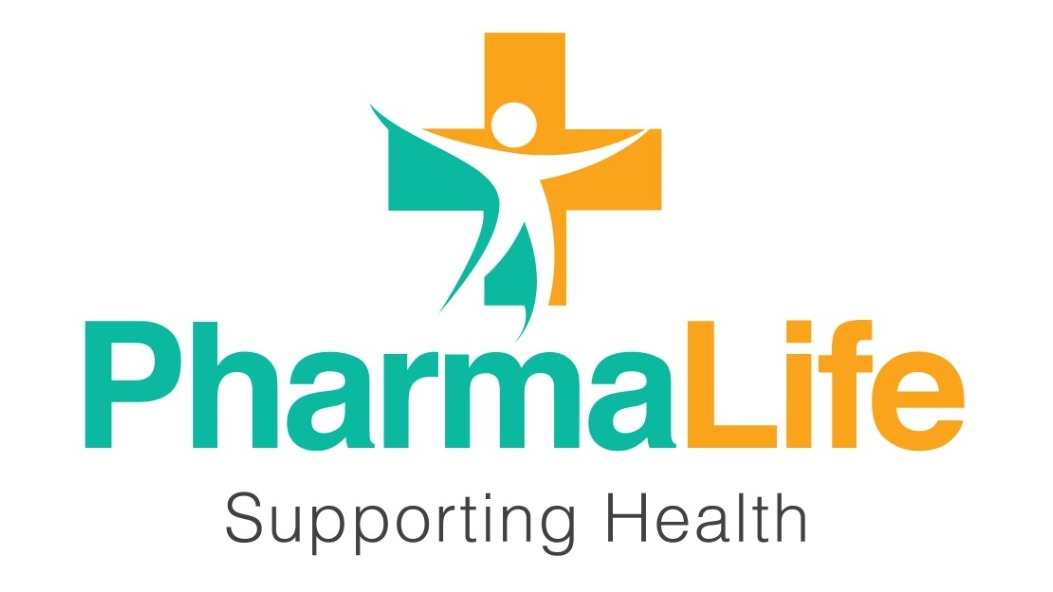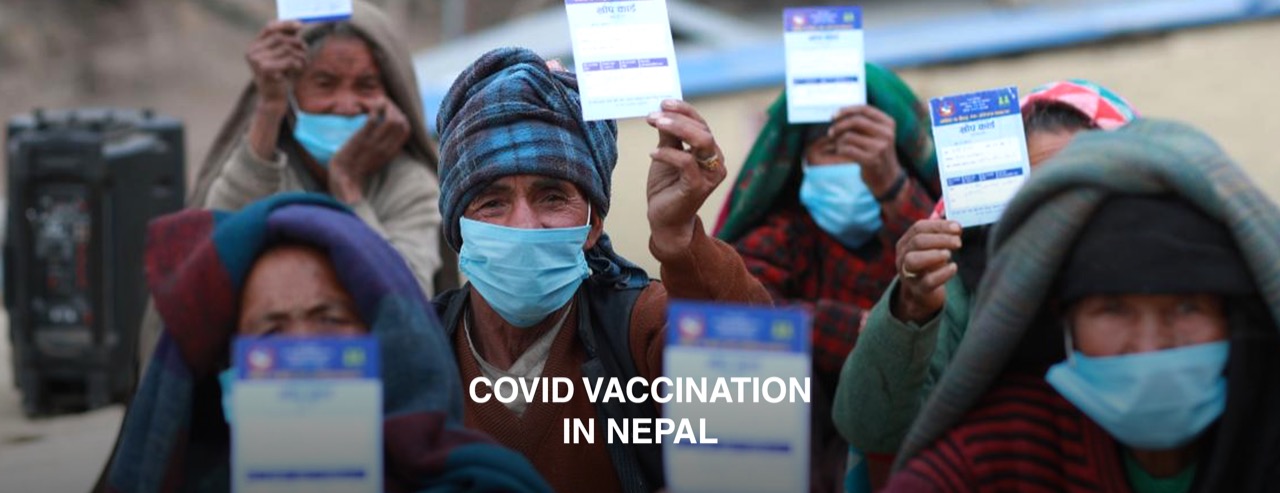Nepal, although survived a deadly second wave of coronavirus, currently stares at the third coronavirus wave, which according to public health experts and researchers is going to be deadlier. Our Himalayan nation, however, needs to vaccinate as many people as possible at the earliest to avoid a devastating third wave.
Understanding COVID-19
COVID-19, a deadly infectious disease, is caused by a group of viruses called coronavirus. Coronaviruses are an extremely common cause of colds as well as upper respiratory tract infections. SARS-CoV-2 is the specific virus behind the COVID-19 which has spread so rapidly for a little over a year that the World Health Organization had to declare it a pandemic. This disease specifically affects the respiratory tract, causing severe cough, shortness of breath, often leading to pneumonia. Many cases, almost 85% are asymptomatic, showing no symptoms of the disease at all. However, the remaining 15% experience mild to severe symptoms.
Almost two years into the global pandemic, Covid-19 has caused over 6.9 million deaths globally. The virus, which spreads through droplet infection, has been equally lethal in Nepal claiming almost ten thousand lives. The coronavirus, responsible for such global health concern, has mutated and transformed into a deadlier form. The delta and delta-plus variants currently spotted in Nepal are nearly twice as infectious and fatal.
Under such circumstances, public health experts suggest expanding the inoculation drive against this life-threatening virus. But, on the contrary, around 72 percent of the population are yet to be vaccinated in Nepal. Many of them are still unaware of the basics of the vaccines and are confused whether or not to vaccinate themselves, or their loved ones.
PharmaLife is here to help you with just that. We will guide you through the basics of covid vaccination in Nepal, to make sure you and your family are shielded against the virus.
COVID-19 Vaccines & How They Protect You
A vaccine basically introduces an inactive or less harmful form of virus, or a genetically engineered sequence that acts like the virus into the recipient’s body. The immune system of the host subsequently develops antibodies against this inactive virus. These antibodies help the host fight off the virus upon repeated encounter, thanks to our body’s memory T-cells.
Vaccine development against COVID-19 has probably witnessed record-breaking-pace. With over 170 different vaccines currently in trail, and over ten vaccines approved by the World Health Organization for emergency approvals. In layperson’s terms, vaccines help introduce antigenic character of a virus into the host’s body.
In case of COVID-19, the antigen is the characteristic spike of protein on each viral particle. Basically, there are four types of vaccines developed against the coronavirus. Some of these vaccines have antigenic character, while others use the body’s own cells to make the viral antigen. These categories of covid vaccines are:
- Whole Virus
- Protein Subunit
- Viral Vector
- Nucleic Acid (RNA or DNA)
The World Health Organization has currently approved eleven vaccines for emergency use, however a number of vaccines waiting for emergency approval are also being administered locally. Here is the list of COVID-19 vaccines approved by the WHO so far:
- Pfizer and BioNTech’s ‘BNT162b2’
- Astrazeneca and Oxford University’s ‘AZD1222’
- COVISHIELD by Serum Institute of India (ChAdOx1-S)
- Johnson & Johnson-Janssen’s ‘Ad26.COV2.S’
- Moderna’s ‘mRNA-1273’
- Sinopharm-BBIBP’s SARS-CoV-2 Vaccine
- Sinovac’s CoronaVac
- BioNtech Tozinameran – COVID-19 mRNA vaccine – Comirnaty
- AstraZeneca/EU approved (ChAdOx1-S) [recombinant]
- AstraZeneca/MHLW approved (ChAdOx1-S) [recombinant]
- AstraZeneca/TGA approved(ChAdOx1-S)
How Does Vaccine Protect You?
Coronaviruses get their name from their characteristic crown-like appearance. These proteinaceous crowns are derived and act as antigen in most of the vaccines. However, in some vaccines, genetic material (RNA) is also used as antigen. When the vaccine is introduced into our bodies, our immune system immediately is triggered.
The inactive form of the vaccine cannot cause any severe impairment to our body function. The immune system, on the other hand, develops antibodies against these antigens to fight them off. Our immune system has a special mechanism which stores the antigenic character for future encounters. Such a mechanism is enhanced by memory T-cells.
Subsequently, if the vaccinated person is infected by the virus in future, the immune system recognizes the antigen. Upon recognition, earlier developed antibodies are deployed to fight off the virus particles. This ensures no serious damage to one’s body and prevents complications and hospitalization. This is how covid vaccines help us shield our bodies from the deadly covid virus and complications brought along.
There are certainly some side effects to these covid jabs, as all sorts of medications have some side effects. But these vaccines which are all approved by WHO have limited side effects and no severe harms have been discovered.
Vaccination Drive in Nepal
Nepal began its nation-wide covid vaccination campaign on January 27 with over a million doses of Covishield vaccines. These vaccines were donated by the government of India through a grant assistance programme, signed between the two nation’s stakeholders. Covishield, a type of AstraZeneca vaccine developed by the Serum Institute of India, was also later donated to Nepal through COVAX, an international vaccine-sharing campaign backed by the United Nations.
However, soon after, India had to face an even worse second wave of COVID-19 which has claimed over four hundred thousand deaths so far. Even though the Ministry of Health and Population (MoHP) had signed a deal with the Serum Institute of India so as to buy over two million doses of Covishield vaccines, they never arrived. The Institute put the shipment on halt citing crisis in India. Consequently, the two million citizens who did get their hands on the first dose of Covishield still wait in desperation for the booster dose.
The government, later in March, imported another one million doses of Vero Cell vaccines from China under grant assistance. China yet again provided another million doses of the same Vero Cell vaccine in June. Vero Cell vaccine is a type of inactivated vaccine (with killed viral antigen) developed by the SinoVac Life Sciences.
On July 12, the much-awaited single-shot Johnson & Johnson vaccine arrived in Kathmandu, which was provided by the United States; through the COVAX facility. With a commitment to vaccinate the entire population of the country, MoHP signed a non-disclosure agreement with SinoVac for the purchase of over four million doses of Vero Cell. These vaccines are to arrive through multiple consignments, within July.
Nepal has been gaining continual commitments of vaccine cooperation from China, India, the United States and many other countries. But, with a fragile healthcare system like ours, we need vaccines, and we need them soon. As of mid-July, only around 3 percent of the 30 million population have been vaccinated, while around 22 million people envisage being vaccinated. According to the John Hopkins University, the total doses administered in Nepal as of 17th July, is 4,039,720.
Will More Vaccines Arrive?
Around 1.4 million people still wait for their booster dose following the first dose of Covishield in the second week of March. Most of these 1.4 million are aged 65 and above. With no evident decisions of vaccine arrivals, the country stands in disarray.
Statements and commitments of grant assistance for inoculation to Nepal have been coming in every now and then. Japan has recently announced the donation of almost two million AstraZeneca type vaccines to Nepal as a grant through the COVAX facility. Back in June, COVAX also shared a commitment of 348,000 doses of Covishield to Nepal. China has also reiterated their vaccine cooperation to Nepal. The Embassy of the United States in Nepal had also announced a similar commitment.
The World Bank has also provided NRs. 12 billion for vaccine procurement. Asian Development Bank has also stated to donate over NRs. 19 billion for the inoculation drive. With such financial aid from various sectors coming in, experts suggest that Nepal should rather opt for buying vaccines than waiting for donation. The government, therefore, is doing necessary homework to order vaccines by paying and has appealed to its citizens to remain patient.
Our team at PharmaLife firmly believes in affordable and accessible medical care ensuring patient’s health and safety. We are also confident that an effective inoculation drive is the only way to tackle COVID-19 pandemic, and thus expect the government to secure vaccine doses for each citizen.
Make Sure You are Vaccinated!
We can bring this virus under control – and soon!
But there is only one way to do that. We have to ensure we get vaccinated.
The spread of the coronavirus can only be curbed with effective vaccination. To make sure you and your family are safe from the virus and its associated complications, get your dose of covid vaccine.
The Ministry of Health and Population has recently initiated a digital platform to voluntarily register for vaccination in Nepal. Through the website of the ministry, https://vaccine.mohp.gov.np, you can easily register and make sure you get your share of vaccines.
With the WHO warning of mixing of different vaccines stating stronger and absurd immune responses might be triggered, PharmaLife suggests our readers to get properly vaccinated with both the doses. We have the power to curb the spread, one dose at a time.
References:
https://extranet.who.int/pqweb/vaccines/covid-19-vaccines
Different COVID-19 Vaccines | CDC
Understanding How COVID-19 Vaccines Work | CDC
How do we know vaccines are safe? | MCW Coronavirus (COVID-19) Resource Center
COVID-19 Vaccination Information and Updates (hopkinsmedicine.org)
The Lancet | Heterologous Prime Boost COVID-19 Vaccination


There are no comments